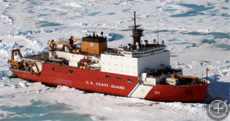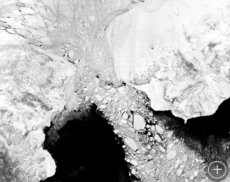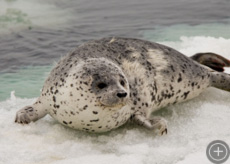
Doing research aboard a US Coast Guard Icebreaker
Exploring changes in ocean circulation and sea ice in the Alaskan Beaufort Sea
Every fall, the Arctic Ocean freezes and is covered with sea ice. During the summer, some portion of this ice melts; in the autumn, the process begins again. Researchers are now trying to understand the extent of changes in the ice cover that’s formed each year. How thick is it? How long does it persist? And how does it affect the ocean beneath it and the animals that live both under and on the ice?
In August 2008, researchers from the Woods Hole Oceanographic Institution (WHOI), the University of Alaska, Fairbanks (UAF), and the University of Washington (UW) boarded the US Coast Guard Icebreaker Healy and collected data to investigate how the atmosphere, pack ice, and ocean interact in the southern Beaufort Sea, and how this influences marine mammals along Alaska’s northernmost coast. Overall, they seek to understand how Pacific-origin waters from the south impact the region, how storms energize the ice and the ocean, and the role that fresh water from Alaskan rivers plays in the regional ice-ocean system.
The Healy, placed into service in 2000, is the newest and most technologically advanced US polar icebreaker. While aboard, principal investigators Dr. Robert Pickart from WHOI and Dr. Harper Simmons from UAF set up moorings anchored to the seafloor and extending up through the water to monitor changes in properties of the ocean and ice throughout the year. In addition, Dr. Kate Stafford from UW placed hydrophones on the seafloor to record marine mammals. Other related projects used underwater vehicles to collect additional water data on the Beaufort shelf, studied satellite imagery to monitor changes in ice cover, and deployed moorings underneath the land-fast ice adjacent to the coast. Of particular interest is how the local populations and behavior of marine mammals change as the ice cover and water conditions vary through the year. This will help researchers better understand possible consequences of a vanishing ice cover in the future.
During this cruise, the research activities and daily life aboard the icebreaker were described by Phil McGillivary, Coast Guard Icebreaker Science Liaison, and Kevin Fall, Principal Research Engineer for Intel Corporation’s research lab in Berkeley, California.











